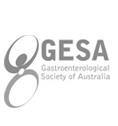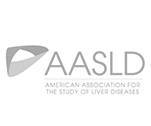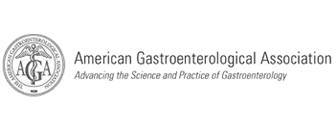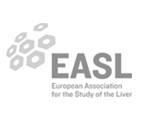Upper Endoscopy
INTRODUCTION - An upper endoscopy is a procedure that allows a physician to examine the upper part of the gastrointestinal (GI) system, which includes the esophagus (swallowing tube), the stomach, and the duodenum (the first section of the small intestine). An endoscopist will perform the procedure; this is a doctor who has special training in using an endoscope to examine the upper GI system, looking for inflammation (redness, irritation), bleeding, ulcers, or tumors.
REASONS FOR UPPER ENDOSCOPY - The most common reasons for upper endoscopy include:
- Persistent nausea and vomiting
- Upper abdominal pain, heartburn, or acid reflux symptoms (an acid or burning sensation in the throat or chest)
- GI bleeding (vomiting blood or blood found in the stool)
- Difficulty swallowing; food/liquids getting stuck in the esophagus
- Abnormal or unclear findings on an upper GI x-ray
- Removal of a foreign body
- To follow-up on previously found polyps (growths), tumors, or ulcers
PREPARATION - Specific instructions regarding how to prepare for the examination will be given before the procedure. These instructions are designed to maximize the patient's safety during and after the examination and to minimize possible complications. It is important to read the instructions ahead of time and follow them carefully. Do not hesitate to call the physician's office or the endoscopy unit if there are questions.
Patients will be asked not to eat or drink anything for six to eight hours before the test. It is important for the stomach to be empty to allow the endoscopist to visualize the entire area and to decrease the possibility of food or fluid being vomited into the lungs while under sedation (called aspiration). Patients may be asked to adjust the dose of their medications or to eliminate specific medications prior to the examination. Some medications need to be discontinued for several days. Patients should ask about their specific medications since some medicines are more important than others.
Patients will also be instructed to arrange for a friend or family member to escort them home after the examination. Although the patient will be awake by the time they are discharged, the medications used for sedation cause changes in the reflexes and judgment and interfere with the ability to drive or make decisions coherently (similar to the effects of alcohol).
WHAT TO EXPECT - Prior to the endoscopy, a nurse will ask questions to ensure the patient understands the procedure and the reason it is planned. The nurse will ask questions to ensure the patient has prepared properly for the procedure. A doctor will also review the procedure, including possible complications, and will ask patients to sign a consent form.
An anaesthetistwill insert an intravenous line (insert a needle into a vein in the hand or arm) to administer medications. The intravenous line insertion feels like a pin prick, similar to having blood drawn. Most endoscopy units use a combination of a sedative (to help patients relax), and a narcotic (to prevent discomfort).
The vital signs (blood pressure, heart rate, and blood oxygen level) will be monitored before, during, and after the examination. The monitoring is not painful. Some patients will be given oxygen during the examination. For safety reasons, patients will be asked to remove dentures.
The procedure - The procedure typically takes between 10 and 20 minutes to complete. The endoscopy is performed while the patient lies on their left side. Some patients will be given a medication to numb the throat (either a gargle or a spray). A plastic mouth guard is placed between the teeth to prevent damage to the teeth and scope.
The endoscope is a flexible tube with a camera,lens and a light source that allows the endoscopist to look at an image on a TV monitor. This image is magnified many times so the endoscopist can see minute changes in tissue. Many people sleep during the test; others are very relaxed and generally not aware of the examination.
The endoscopist may take tissue samples (biopsies) or perform specific treatments (such as dilation, removal of polyps, treatment of bleeding), depending upon the reason for the procedure and what is found during the examination. These treatments are not painful. Air is introduced through the scope to open the esophagus, stomach, and intestine, allowing the scope to be passed through these structures and improving the endoscopist's ability to visualize all of the structures. Patients may experience a mild discomfort as air distends the tissue. This is not harmful and belching may relieve the sensation. The endoscope does not interfere with breathing. Taking slow, deep breaths during the procedure may help a patient to relax.
RECOVERY - After the endoscopy, patients will be observed for one to two hours while the sedative medication wears off. The medicines cause most patients to feel tired or have difficulty concentrating, and patients should not drive or return to work for 12 hours after the procedure.
The most common discomfort after the examination is a feeling of bloating as a result of the air introduced during the examination. This should resolve quickly. Some patients also have a mild sore throat. Most patients are able to eat soon after the examination.
COMPLICATIONS - Upper endoscopy is a safe procedure and complications are uncommon. The following is a list of possible complications:
Aspiration of food or fluids into the lungs, the risk of which can be minimized by refraining from eating for 8 hours and from drinking for four hours before the examination.
The endoscope can cause a tear or hole in the tissue being examined. This is a serious complication but fortunately occurs only very rarely.
Bleeding can occur from biopsies or the removal of polyps, but it is usually minimal and stops quickly on its own or can be easily controlled.
Reactions to the sedative medications are possible; the endoscopy team (doctors and nurses) will ask about previous medication allergies or reactions and about health problems such as heart, lung, kidney, or liver disease. Providing this information to the team ensures a safer examination. The medications can also produce irritation in the vein at the site of the intravenous line. If redness, swelling, or warmth occurs, warm wet towels applied to the site may relieve the discomfort. If discomfort persists, a patient should call their primary care provider or the endoscopy unit. If this is not possible, the patient should seek assistance in an emergency department.
The following signs and symptoms should be reported immediately:
- Severe abdominal pain (more than gas cramps)
- A firm, distended abdomen
- Vomiting
- Temperature greater than 380C
- Difficulty swallowing or severe throat pain
- A crunching feeling under the skin.
AFTER UPPER ENDOSCOPY - Most patients tolerate endoscopy very well and feel fine afterwards. Some fatigue is common after the examination, and patients should plan to take it easy and relax the rest of the day.
The endoscopist can describe the result of their examination before the patient leaves the endoscopy unit. If biopsies have been taken or polyps removed,the results will be sent to the referring doctor.










